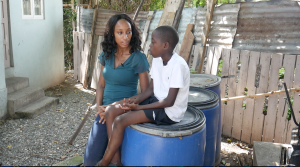Watch the May 12 ICFJ-Microsoft LinkedIn Live discussion right here.

The journalism industry has had a long history of freelancers who work not just outside the newsroom that hires them, but sometimes a continent away. Even these vets used to remote work though are feeling the same challenges and fatigue that people in shared workplaces are discovering anew.
Hosted by the International Center for Journalists, the virtual discussion with award-winning multimedia correspondent Melissa Noel (@NoelKnowsWell) and Microsoft News Labs Managing Director Ben Rudolph (@BenThePCGuy) covered the gamut from individual productivity and work goals to family time and mental discipline. From that chat, ten lessons emerged that, while discussed in the context of story gathering, extends to all work and play.
“No.” is a complete sentence
Place appropriate limits on projects, work, and other stressors in life.
Designate a workspace in your home.
Maintain healthy boundaries for yourself and other members of your household.
A separate room with a door is ideal, but not a luxury everyone can afford. You may need to use a subset of another space — like a corner of a bedroom — for work.
Set up your gear there so that when you enter that space, your brain switches into work mode. Leave that space and switch into home mode.
Get creative! While you may not want to deploy tape lines on the floor like Less Nessman in WKRP in Cincinatti did, or split a room in half like Bobby and Peter Brady in The Brady Buch or Stephanie and DJ Tanner in Full House, you can still set off your work space. Plants, bookcases, or even beaded curtains hung from the ceiling can provide just enough visual separation to feed your mental separation between work mode and home mode.
Practice articulating your processes.
When you need a subject, source, or partner to get some footage for you, you have to able to explain to them what you want so they can deliver. It’s much harder to do that if you can’t articulate it to yourself first.
Learn about technology options.

Solo operators in particular may need to dive into areas they haven’t explored before. For instance, lighting and audio technology for home office use has improved significantly.
It’s great to work on a laptop screen on the go, but for 8 hours a day, you probably want more screen real estate to be more productive, so look at extra monitors.
Check out what’s available to help you tell more effective stories.
Practice vulnerability.
You don’t have to present an air of invincibility. It’s okay to be vulnerable. We’re all human, and we’re all grieving the loss of loved ones, jobs, lifestyles, and more. It’s hard. You don’t have to pretend it isn’t.
Create a daily checklist.
Process matters even more when working from home. In the absence of daily standup meetings, the routine of going from your desk to the office coffee machine at 8:55, or having a routine check-in with an office mate, it’s easy to wonder where the morning went.
A daily checklist is a terrific way to start the day on a productive note. Take the time today to list the things that should be part of your routine every day and make a physical or digital list you use to start the day. A sample list might include:
- Review the Mayor’s Daily COVID-19 briefing
- Check for edits from my client
- Draft story pitch one
- Send story pitch one
- Draft story pitch two
- Send story pitch two
- Message a colleague to check in
Starting the day with a checklist gives you structure and feeds a sense of accomplishment as you mark things off.
Let technology do the heavy lifting.
Transcribing files, managing your calendar, and managing your checklists all take up brain power and time. Offload those onto technology when you can to free up time and mental resources to do what you do best — finding and telling the story.
Set boundaries on time and attention.
It’s not enough to schedule family time and be in the room but you’re preoccupied with an editorial review or checking your email every two minutes. When you’re working, focus on work. When you’re with family, focus on family.
There is going to be a story tomorrow.
You have to be able to shut down. You won’t finish reporting the news. There will be new stories tomorrow. It’s okay to stop, take a break, and come back refreshed the next day.
You can learn (or relearn) a lot watching that 40-minute conversation. That’s one thing I like about these chats: I get to experience the stories of people who create the stories of the world. Personally, as a trainer, I know one of the most important things I can do to be more effective is to learn from my students.
Whom would you like to hear from in future LinkedIn Live presentations? Or what topics would you like us to cover? Let us know on the Microsoft News LinkedIn page.




